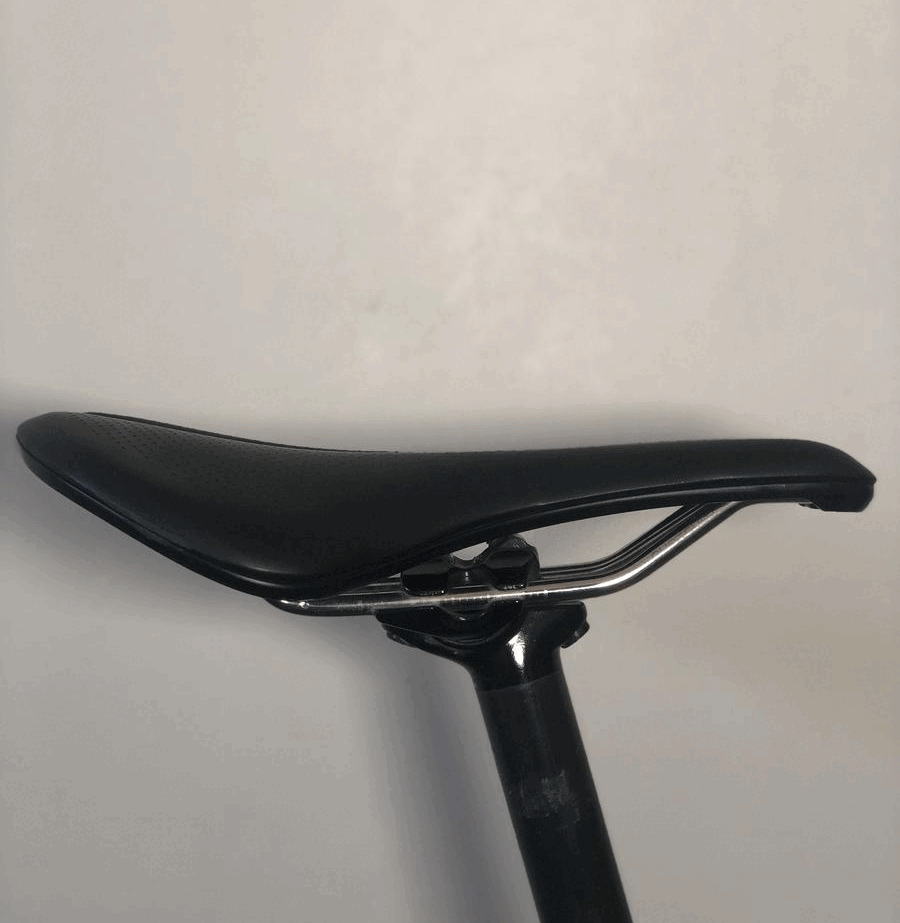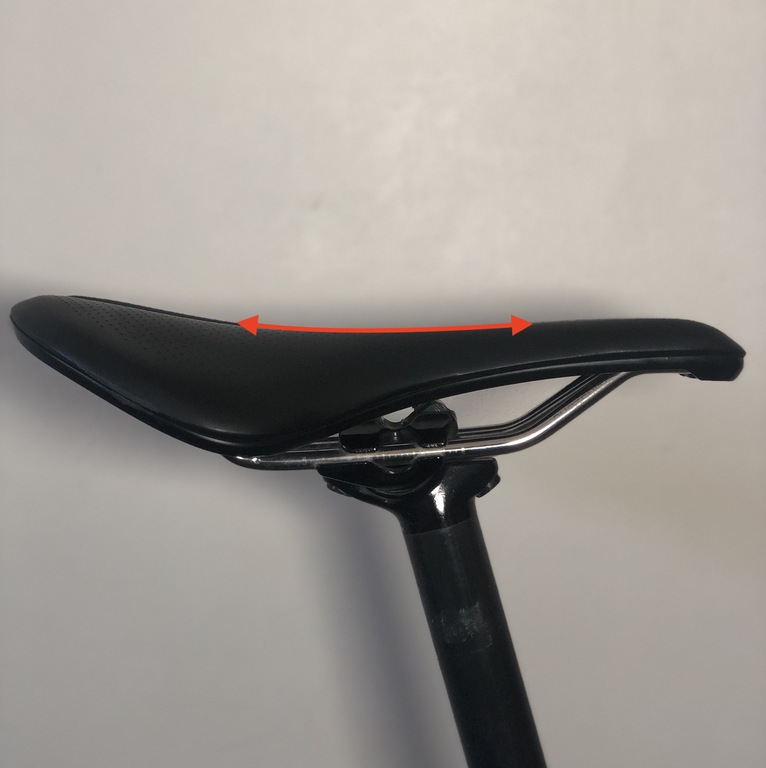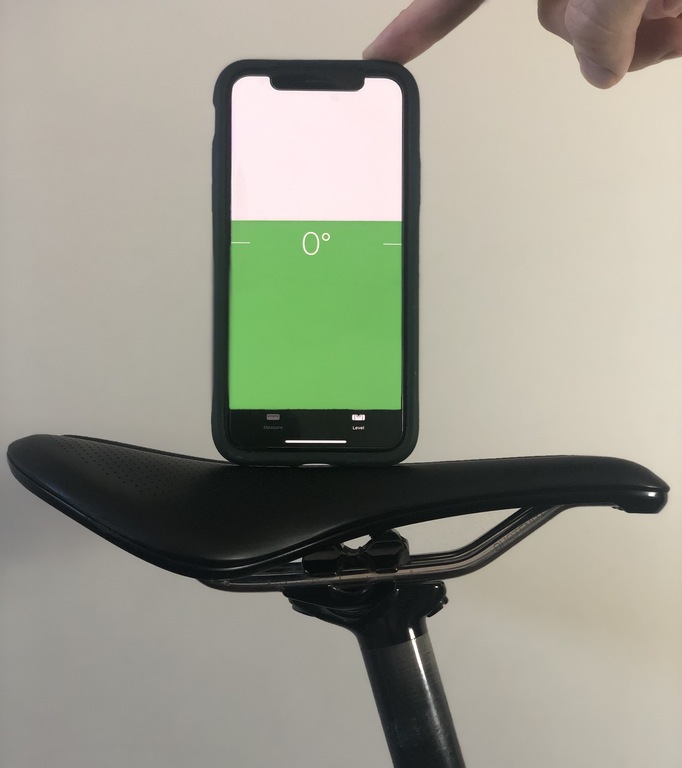
Saddle Tilt 101
By Justin Goulding
What is Saddle Tilt?

Steps To Setting Saddle Tilt
- Level your saddle
- Set Saddle height and Fore/aft
- Set Saddle Tilt
1. Level Your Saddle
What is Level?

If your saddle is already level move on to the next step. If not, take some time to level your saddle and keep in mind that a little goes a long way. Most of the time you’ll only need a small adjustment to make a daily large change in your saddle tilt.

2. Set Saddle Height and Fore/aft
3. Set Saddle Tilt
- If it feels fine, leave it. A level saddle will work just perfectly for a huge part of the riding population (when height and fore/aft are correct). Don’t feel the need to tilt it if it feels good.
- If you feel pressure near the front of the saddle, this is often felt in the perineal area, tilt the saddle down, A LITTLE. No need for big adjustments 1° is often enough. Repeat as needed
- *if you find yourself with persistent perineal pressure and your saddle tilt is <-3° you may want to revisit your saddle height (too high) or consider a saddle with a cutout or different shape.
- If you find yourself constantly sliding forward on the saddle, tilt it up, A LITTLE. Upward tilt should generally not be necessary, though with some saddle shapes it can help. It would be very uncommon for any saddle to need more than 1° of upward tilt.
Other Resources
- Should you tilt your saddle? – Cycling Weekly
- Saddle angle – have we got it all wrong – GCN
Justin is a lifelong cyclist that has spent the past 20 years in the bike industry across a variety of roles. His diverse work in sales, procurement, and instructing is all driven by a desire to help more people experience the wonders of cycling. He brings this breadth of experience to building MyVeloFit into a company and service that not only provides bike fits, but one that enables more people to get the most out of cycling.
-
Justin Gouldinghttps://www.myvelofit.com/fit-academy/author/justin/
-
Justin Gouldinghttps://www.myvelofit.com/fit-academy/author/justin/
-
Justin Gouldinghttps://www.myvelofit.com/fit-academy/author/justin/
-
Justin Gouldinghttps://www.myvelofit.com/fit-academy/author/justin/
Ready to get started?
Athletes from around the world use MyVeloFit to improve their cycling position.
Whether you are a veteran or new to the sport, MyVeloFit can help you improve your position.
What is Saddle Tilt?

Steps To Setting Saddle Tilt
- Level your saddle
- Set Saddle height and Fore/aft
- Set Saddle Tilt
1. Level Your Saddle
What is Level?

If your saddle is already level move on to the next step. If not, take some time to level your saddle and keep in mind that a little goes a long way. Most of the time you’ll only need a small adjustment to make a daily large change in your saddle tilt.

2. Set Saddle Height and Fore/aft
3. Set Saddle Tilt
- If it feels fine, leave it. A level saddle will work just perfectly for a huge part of the riding population (when height and fore/aft are correct). Don’t feel the need to tilt it if it feels good.
- If you feel pressure near the front of the saddle, this is often felt in the perineal area, tilt the saddle down, A LITTLE. No need for big adjustments 1° is often enough. Repeat as needed
- *if you find yourself with persistent perineal pressure and your saddle tilt is <-3° you may want to revisit your saddle height (too high) or consider a saddle with a cutout or different shape.
- If you find yourself constantly sliding forward on the saddle, tilt it up, A LITTLE. Upward tilt should generally not be necessary, though with some saddle shapes it can help. It would be very uncommon for any saddle to need more than 1° of upward tilt.
Other Resources
- Should you tilt your saddle? – Cycling Weekly
- Saddle angle – have we got it all wrong – GCN
Justin is a lifelong cyclist that has spent the past 20 years in the bike industry across a variety of roles. His diverse work in sales, procurement, and instructing is all driven by a desire to help more people experience the wonders of cycling. He brings this breadth of experience to building MyVeloFit into a company and service that not only provides bike fits, but one that enables more people to get the most out of cycling.
-
Justin Gouldinghttps://www.myvelofit.com/fit-academy/author/justin/
-
Justin Gouldinghttps://www.myvelofit.com/fit-academy/author/justin/
-
Justin Gouldinghttps://www.myvelofit.com/fit-academy/author/justin/
-
Justin Gouldinghttps://www.myvelofit.com/fit-academy/author/justin/


